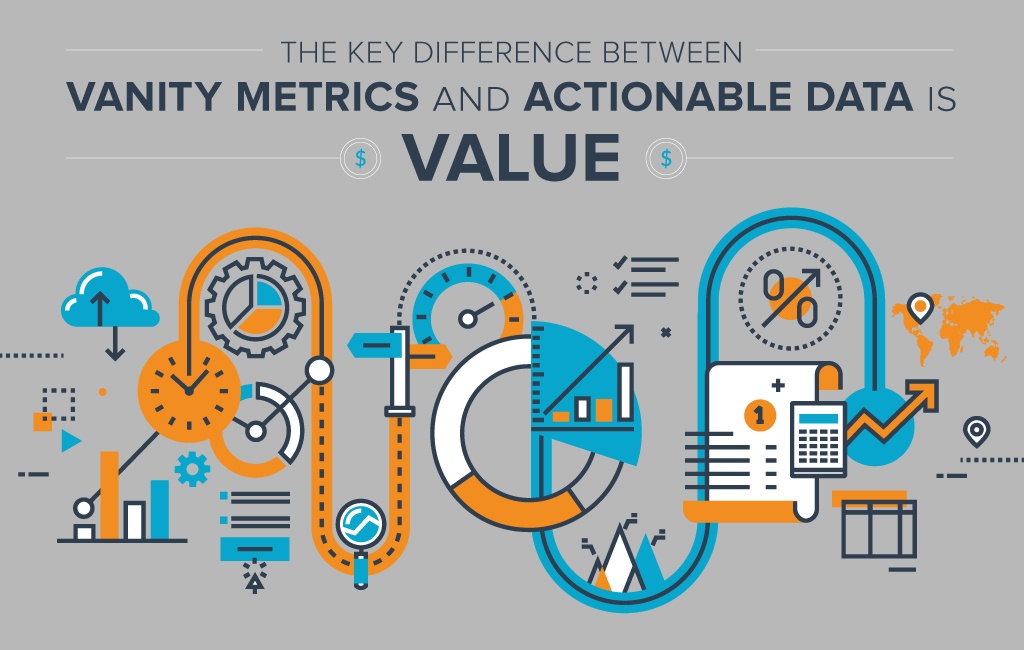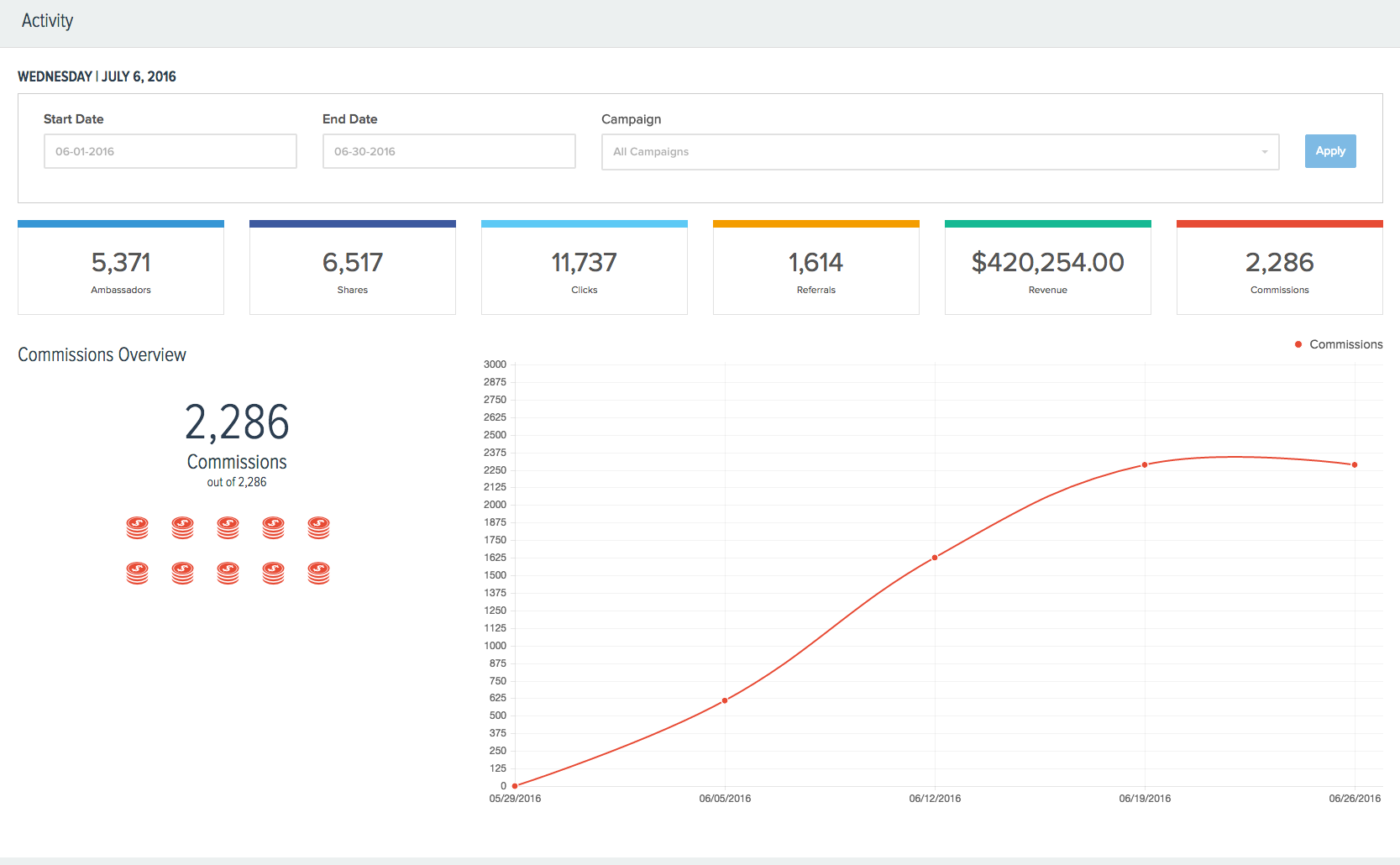It’s rush hour in Big City, USA and every route into the city is blocked with gridlock traffic. What’s the hold up? It appears that a few drivers have decided to aimlessly follow the vehicle in front of them instead of obeying actual traffic signals. Some drivers are even looking in their rear-view mirror to determine their next turn. Others have become so infatuated with their reflection that they bump into the nearest obstacle.
Okay, this may sound like a pretty unbelievable scenario, but modern brands that prioritize vanity metrics over actionable data invite the same fate as the aforementioned cars that buzz through intersections without looking both ways. Vanity-driven businesses are destined to run revenue red lights and briefly pause at web traffic intersections that likely require longer stops.
Not sure if your business has fallen victim to vanity or if you’re on the fast track to long-lasting success? Think about the last time your company’s expectations collided with the reality of driving new leads and customers.
Did you expect the hit? Was your company braced for impact or did your initial strategy veer out of control? How did you repair the damage?
Let’s make sure that you aren’t driving your business in the wrong direction by following the wrong routes to success. First, let’s discuss the difference between vanity metrics and actionable data.
Vanity Metrics
Vanity metrics are easily manipulated responses to a specific event. Think blog post likes, social media followers or website traffic. Sure any increase in these numbers will make a company feel good, but these numbers aren’t linked to significant metrics that can improve or optimize your overall business strategy. These numbers leave you with the feeling of “something good is happening,” but no real insight into what that could be.
Actionable Data
Actionable data provide metrics that ties specific actions to observed results. Strategic efforts like optimization and A/B testing empower business by linking your brand’s campaigns to consumer behavior and preferences. These helpful measures empower businesses to directly correlate observations to substantive analytical data. With this type of data set, you can clearly define “something good is happening because of X.”

So what’s so bad about vanity metrics?
With new online businesses popping up every day, it’s easy to get sucked into the numbers game. Companies that want to remain contemporary and competitive should avoid the easy route. The easiest way to support a short-sighted strategy is to rely on basic metrics that are readily accessible like pageviews, email captures, and resource downloads. While this data gives a high-level view on your brand’s effectiveness, there’s no way to dig deeper for strategic direction. Even if you’re comparing apples-to-apples within your analysis, you could be emphasizing rotten information.
“The only metrics that entrepreneurs should invest energy in collecting are those that help them make decisions. Unfortunately, the majority of data available in off-the-shelf analytics packages are what I call Vanity Metrics. They might make you feel good, but they don’t offer clear guidance for what to do.” -Eric Reis, Entrepreneur and Author of The Lean Startup
If you stick to the surface, your company can miss out on the nuanced experiences, interests, and interactions of your customers. Businesses driven by vanity metrics often seek information that confirms strengths or goals, denies shortcomings, and gleans over insightful customer information.
Using vanity metrics will protect how your company thinks of itself, but does not reflect the actual preferences or behaviors of your audience.
Now what?
Actionable data emphasizes engagement by dissecting the ways that customers interact with your brand beyond the initial point of contact and if you use an automation tool, you can most likely update this information as leads progress through the funnel. The most dynamic marketing strategies can account for long-tail benefits that can’t be accessed with the impulsive week-to-week analytics associated with vanity metrics.
For example, let’s take a look at an Ambassador portal below:

What’s the benefit?
Companies can make the leap from staring at vanity data to making strategic moves with Ambassador’s automated referral marketing platform. As shown, customized portals track customer activity beyond the initial point of contact or one campaign. The captured data shows good-to-know data like clicks and shares, but also provides need-to-know numbers like referrals, revenue, and commissions.
This real-time data acts as an ROI scoreboard so companies can track and monitor the exact leads and specific revenue that enrolled customers are driving their way. Ambassador goes beyond vanity metrics to show companies which campaigns are successful as well as opportunities to optimize well-performing programs and segmentations.
Now that we’ve covered the types of metrics that should be analyzed, how do you determine the analytics that are most useful to your brand? Initially, start out by identifying the issue that you are seeking to address. Have an issue with online web traffic? Or do you want a better understanding of what drives customers to share content? Asking the right questions can help determine where you’re being successful with your marketing programs, and where you need improvement.
As a rule of thumb, keep in mind that anything that can contribute to a greater understanding of your customer’s online behavior should be tracked and measured.

Benefits of accessing actionable data
So how can your company overcome the temptations of vanity metrics and access insightful data that is unique to your company and its customers? By leveraging solutions that offer robust reporting and easy-to-understand dashboards so marketing teams can make smart decisions with the data presented. Let’s face it, sometimes being a better marketer boils down to adopting a better strategy from the start.
